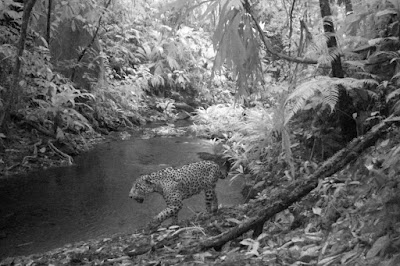Ciudad Blanca, the White City, was not located until 2012, deep within pristine lowland rainforest comprising the largest area of protected forest in Honduras. It is largely unexplored, which accounts for the amazing amount of wildlife encountered in the recently completed assessment. Almost all taxonomic groups were represented in abundance indicating a healthy, intact forest biome. A total of 183 plant species were identified including the critically endangered palm Reinhardtia gracilis [photo below]. Fifty-eight have important human uses; plants indicating the presence of early Mezoamerican settlement, like cacao, were also found.
Two hundred forty-six moths and butterfly species inhabit the forest and fifteen were new recordings for Honduras. Once thought to be extinct in Honduras, the tiger beetle, Odontochila nicaraguense, was recorded by researchers, while the longhorn beetle,Ischnocnemis caerulescens was documented for the first time in Honduras. Another insect recorded for the first time north of Nicaraugua was the tarantula, Sricopelma melanotarsum.
Forty small mammal species were found, representing thirty bat species and ten rodent species. Fourteen of these are considered indicator species of habitat health. Of the bats, one has not been reported in Honduras for seventy-five years, the pale face bat Phylloderma stenops [photo]. Twenty-two amphibians and thirty-five reptile species were also observed including a false coral snake not see in the region since 1965.
All of these species are needed to support large mammals including carinovres such as the four feline species of the region: jaguars, ocelot, margay, and puma. Presence of these predators are the best indicator of a healthy ecosystem. Game species sensitive to hunting were found in the forest: brocket deer, white-tailed deer, Baird’s tapir, paca and both peccary species. The white-lipped peccary, relative of the domestic pig, was found to be common in the study site, but now is confined to only 13% of its former range in Central America. These findings of a rich, diverse ecosystem that still harbors rare and threatened species makes Ciudad Blanca a top priority conservation site, protected from encroaching human use for agriculture and mining.



